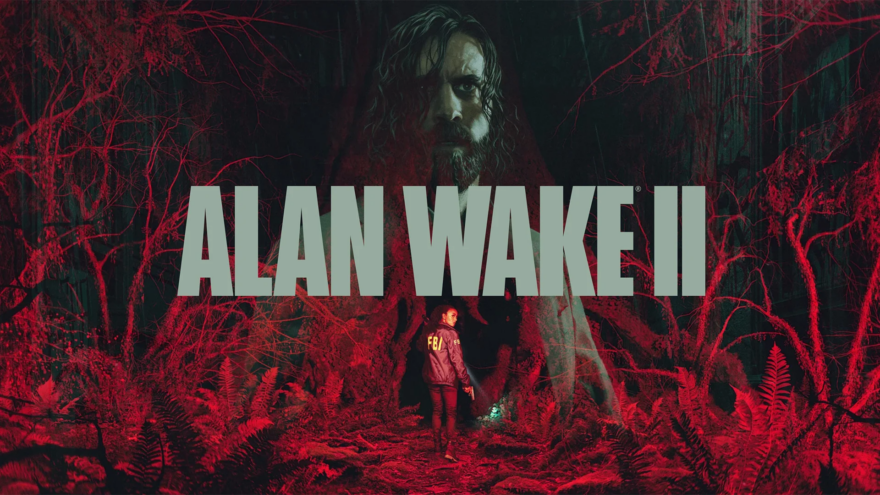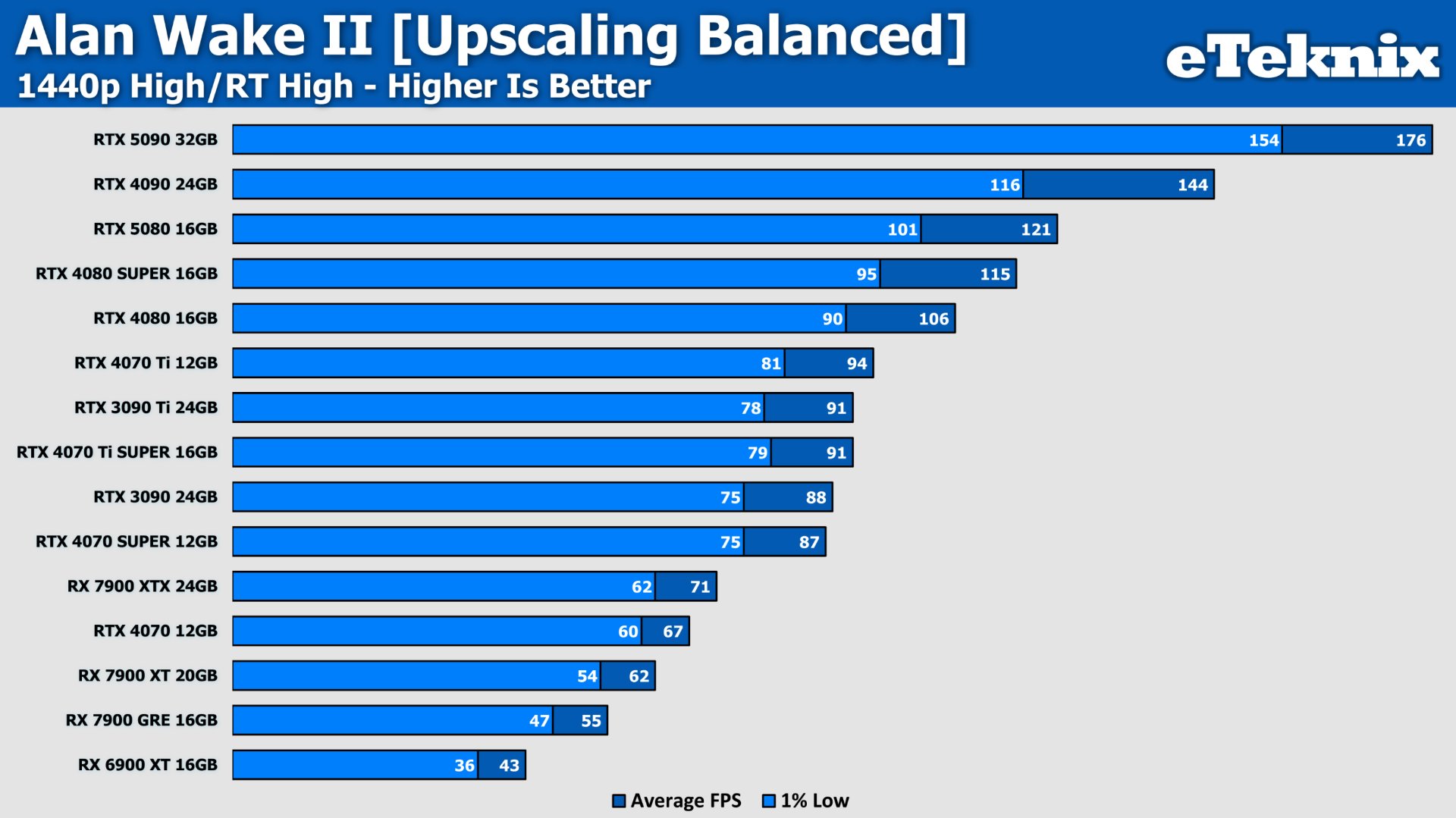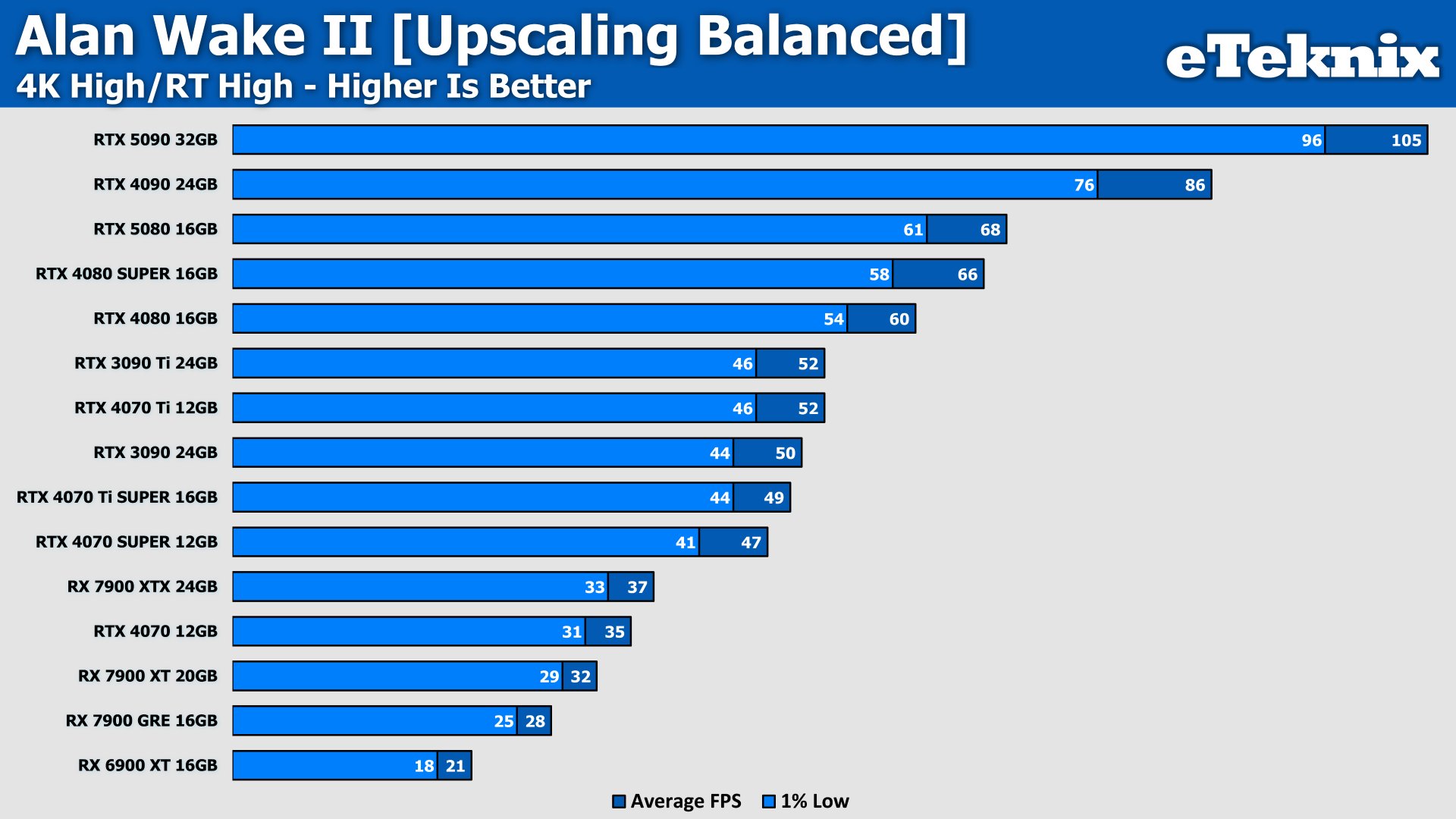Nvidia GeForce RTX 5080 Founders Edition Review
Ray Tracing Alan Wake 2

Alan Wake II pushes the boundaries of visual fidelity with its ambitious implementation of “full ray tracing,” also known as path tracing. This means ray tracing handles all lighting, reflections, and shadows, creating a more realistic and immersive environment. The game features ray-traced direct lighting for accurate and dynamic shadows, ray-traced indirect lighting for realistic bounced light, ray-traced reflections on surfaces like water and glass, and ray-traced transparency for convincing interaction with transparent objects.

In Alan Wake II with ray tracing enabled at 1440p, the RTX 5080 showcases its strengths in handling demanding graphical features but doesn’t entirely dominate across the board. Compared to the RTX 4080, it delivers a solid 14% improvement in the averages and a 12% boost in the lows, offering a noticeable uplift in performance. Against the 4080 SUPER, the gains are more modest, with the 5080 coming in 5% ahead in the averages and 6% in the lows, showing only a slight advantage over this refreshed card. However, when stacked against the RTX 4090, the 5080 falls short, trailing by 15% in the averages and 13% in the lows, reinforcing the 4090’s position as the go-to for ray tracing workloads though cost is obviously a big factor. The most striking comparison comes in the NVIDIA vs. AMD matchup, where the 5080 outshines the 7900 XTX by a staggering 70% in the averages and 62% in the lows, demonstrating how far AMD still has to go in the raytracing space.

At 4K with ray tracing enabled, the RTX 5080 continues to deliver respectable improvements over the previous generation but still shows some limitations. Compared to the RTX 4080, it offers a 13% improvement in the averages and an identical 13% boost in the lows, showcasing at least, consistent gains. The 4080 SUPER sees smaller margins, with the 5080 coming in just 3% ahead in the averages and 5% in the lows, indicating a narrower performance gap. When compared to the RTX 4090, the 5080 lags behind, trailing by 10% in the averages and a more pronounced 20% in the lows, which highlights its struggle to compete at the top end of the market but considering it’s a lot cheaper, this could be a game changer in terms of the cost per frame. When looking at how AMD do, the 5080 absolutely dominates the 7900 XTX, leading by a jaw-dropping 106% in the averages and 84% in the lows, making it clear that AMD’s ray tracing capabilities remain significantly behind NVIDIA’s latest offerings.








